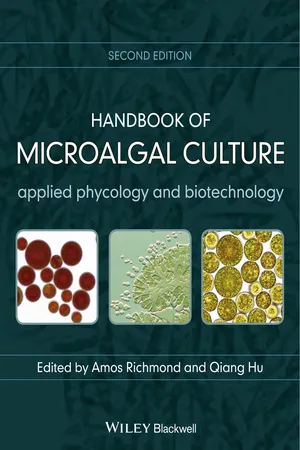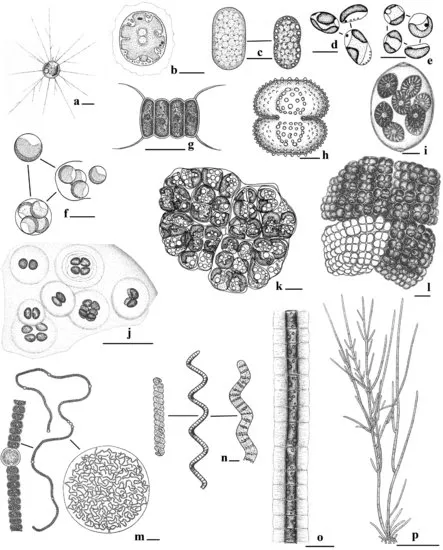
Handbook of Microalgal Culture
Applied Phycology and Biotechnology
Amos Richmond, Qiang Hu
- English
- ePUB (adapté aux mobiles)
- Disponible sur iOS et Android
Handbook of Microalgal Culture
Applied Phycology and Biotechnology
Amos Richmond, Qiang Hu
À propos de ce livre
Algae are some of the fastest growing organisms in the world, with up to 90% of their weight made up from carbohydrate, protein and oil. As well as these macromolecules, microalgae are also rich in other high-value compounds, such as vitamins, pigments, and biologically active compounds, All these compounds can be extracted for use by the cosmetics, pharmaceutical, nutraceutical, and food industries, and the algae itself can be used for feeding of livestock, in particular fish, where on-going research is dedicated to increasing the percentage of fish and shellfish feed not derived from fish meal. Microalgae are also applied to wastewater bioremediation and carbon capture from industrial flue gases, and can be used as organic fertilizer.
So far, only a few species of microalgae, including cyanobacteria, are under mass cultivation. The potential for expansion is enormous, considering the existing hundreds of thousands of species and subspecies, in which a large gene-pool offers a significant potential for many new producers.
Completely revised, updated and expanded, and with the inclusion of new Editor, Qiang Hu of Arizona State University, the second edition of this extremely important book contains 37 chapters. Nineteen of these chapters are written by new authors, introducing many advanced and emerging technologies and applications such as novel photobioreactors, mass cultivation of oil-bearing microalgae for biofuels, exploration of naturally occurring and genetically engineered microalgae as cell factories for high-value chemicals, and techno-economic analysis of microalgal mass culture. This excellent new edition also contains details of the biology and large-scale culture of several economically important and newly-exploited microalgae, including Botryococcus, Chlamydomonas, Nannochloropsis, Nostoc, Chlorella, Spirulina, Haematococcus, and Dunaniella species/strains.
Edited by Amos Richmond and Qiang Hu, each with a huge wealth of experience in microalgae, its culture, and biotechnology, and drawing together contributions from experts around the globe, this thorough and comprehensive new edition is an essential purchase for all those involved with microalgae, their culture, processing and use. Biotechnologists, bioengineers, phycologists, pharmaceutical, biofuel and fish-feed industry personnel and biological scientists and students will all find a vast amount of cutting-edge information within this Second Edition. Libraries in all universities where biological sciences, biotechnology and aquaculture are studied and taught should all have copies of this landmark new edition on their shelves.
Foire aux questions
Informations
Microalgae are a diverse collection of microorganisms that conduct oxygen-evolving photosynthesis. Their biochemical diversity includes production of a wide array of carbohydrates, lipids, and proteins that are commercially valuable. Many produce several different morphologies, for example, flagellate, coccoid, and cyst stages. Many species are capable of sexual reproduction, some microalgae apparently having only asexual reproduction (e.g., Chlorella, Nannochloropsis). Algal ultrastructure is also diverse, paralleling their biochemical and physiological diversity. Many genomes of microalgae have been sequenced, and these are providing new insights into algal diversity. Genomic research has corroborated known endosymbiotic events and has revealed unknown, or cryptic, such events. Endosymbiosis has been a major factor in the production of algal diversity, and once it is better understood, this may be a practical means for producing new combinations of traits that have commercial application. The current state of algal taxonomy is summarized.

